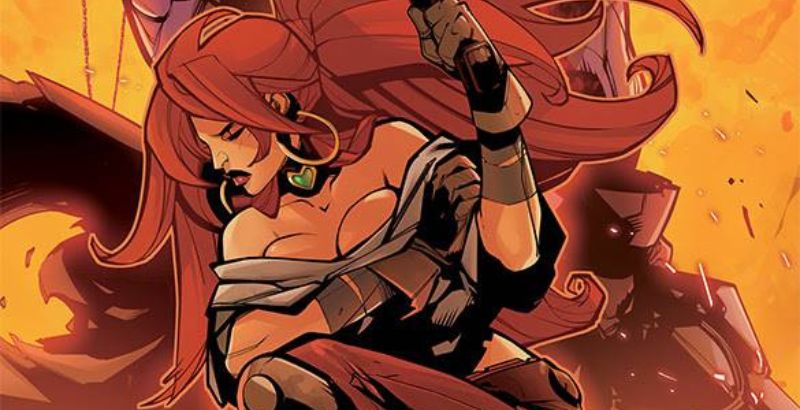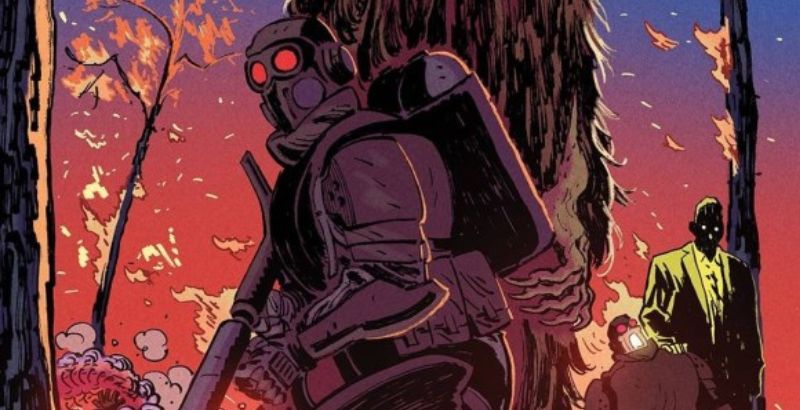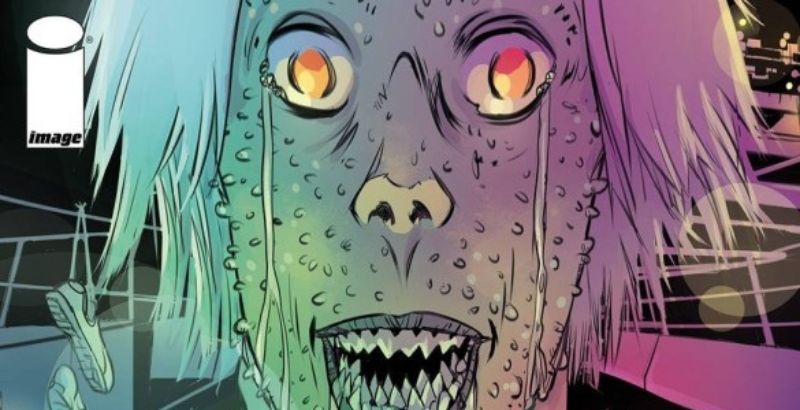
Rogue Sun #5 is written by Ryan Parrott, illustrated by Abel and Simone Ragazzoni, colored by Natalia Marques, and lettered by Becca Carey. It’s published by Image Comics. Dylan Siegel is rocked to his core by the revelation that his mother, Gwen, is the mysterious villain who murdered his father, Marcus Bell—and so is the spirit of Marcus, who currently inhabits the Sun Stone that lets Dylan transform into Rogue Sun. Gwen offers Dylan an ultimatum: give her the Sun Stone so that she can destroy it and save him from Marcus’ influence. Flashbacks reveal how Gwen and Marcus met and what drove Gwen down her path of murder.
It’s fair to say that the relationship between parents and children drives the superhero genre. Often, it’s the death of a parent that drives a hero—see Batman or Spider-Man. Sometimes, a hero wants their child to follow in their footsteps—fellow Image superhero sagas like Invincible and Jupiter’s Legacy use this concept as their base. And ever so often, you have a supervillain whose progeny rebel against them. The Siegel family falls deep into that last category, as Gwen is determined to scrub Marcus from the Earth, and Dylan is struggling with the fact that his own mother murdered his father.
However, Parrott adds some pathos to this concept by cutting back and forth in time to reveal how Gwen became a supervillain. Her decision has some emotional weight, and readers will no doubt understand where she’s coming from, even if they don’t condone her actions. Many writers want to write a complex villain but often stumble regarding goals and their relationships with others. Thankfully, Parrott isn’t like most writers; his characters feel flawed, intriguing, and, most of all, human.
The duality of past and present are captured by both Abel and Ragazzoni, who illustrated parts of the Supermassive special that introduced the world to Marcus as Rogue Sun. Ragazzoni’s art hews pretty close to Abel’s style, with Gwen and Marcus sporting features that will eventually appear in Dylan. He also conveys a wealth of emotion in Gwen—her face lights up with joy when she’s first holding a baby Dylan, and she erupts with anger when Marcus announces he’s leaving her. Abel handles the more action-packed moments of the issue, with the Siegel family feud being interrupted by a very-not-dead Demonika.
Topping off the art is Marques, who is stepping in as the series’ main colorist for Chris O’Halloran. She draws a distinct line between past and present by giving Ragazzoni’s art a more muted, almost sepia-colored tone, while Abel’s art boasts the jet-black shadows and reddish-orange flame that comprise Rogue Sun’s body and the general tone of the book. It also seeps into the lettering, as Dylan’s words are tinged with the same color as his flames, and Demonika’s word balloons are as black as her soul.
Rogue Sun #5 crosses between past and present as the fiery hero deals with the fallout of his twisted family tree. When praising the series, The Boys showrunner Eric Kripke said that the best superhero stories deal with humanity, and this issue is a prime example of that. Though its first arc has yet to end, Rogue Sun is fast approaching the same level as its companion title Radiant Black.
Rogue Sun #5 is available wherever comics are sold.
Rogue Sun #5
TL;DR
Rogue Sun #5 crosses between past and present as the fiery hero deals with the fallout of his twisted family tree. When praising the series, The Boys showrunner Eric Kripke said that the best superhero stories deal with humanity, and this issue is a prime example of that.






